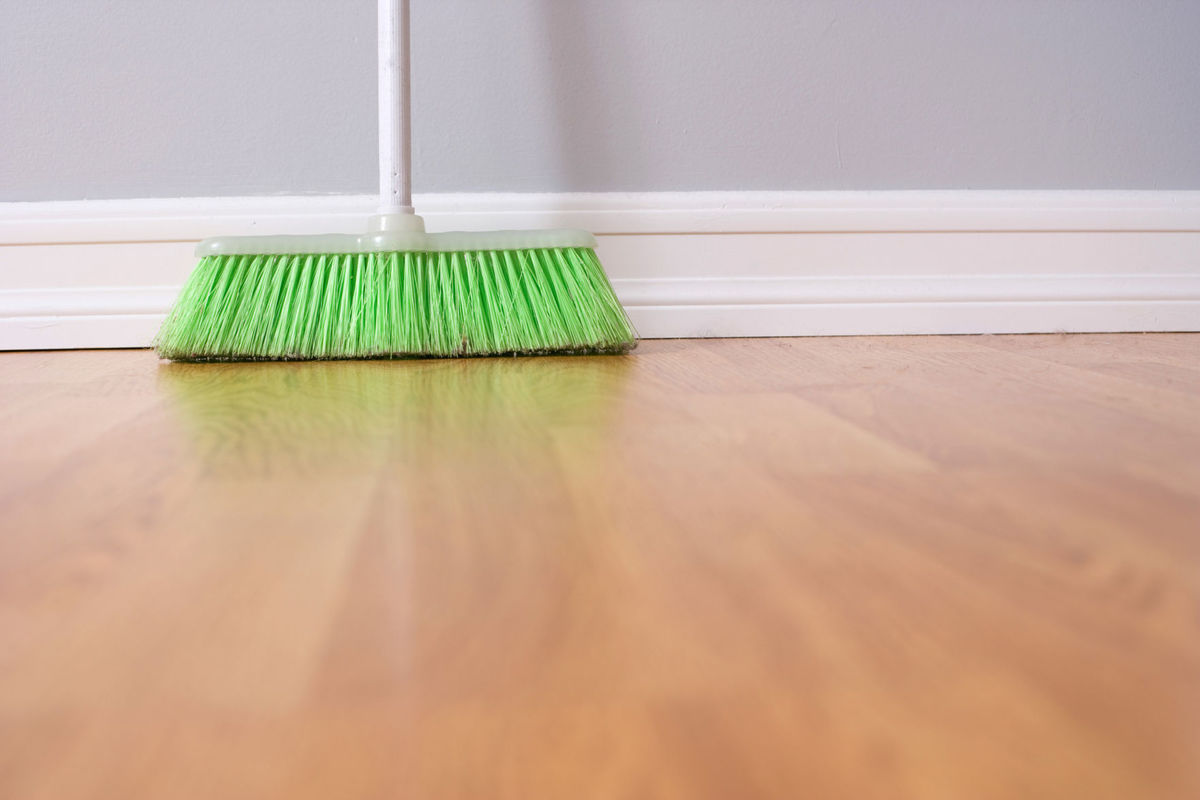
The No. 1 rule for cleaning your hardwood floors is: Do no harm.
Hardwood flooring has been around for centuries, but there’s still some confusion about the best way to maintain it. One of the biggest problems, of course, is there are so many different types of hardwood available—with some finishes requiring different care than others. Fortunately, with the right materials, tools and guidelines, anyone can see great results.
Contents
ADVICE ON CLEAN ING HARDWOOD
When you have new flooring installed, it’s a good idea to ask the installation professional about what you should and shouldn’t use to clean it. In most cases, a pro will be able to advise you regarding which cleaning agents to purchase and which expert techniques they would personally use to clean your particular type of flooring.
Of course, many of the people looking for advice to help them clean their hardwood floors won’t be around for installation. And, in some cases, the flooring will have been installed a generation or two earlier. In this situation, you may want to contact a professional who specializes in restoration to inquire about the best way to clean your hardwood flooring.
ENGINEERED OR LAMINATE FLOORS
Engineered lumber and laminate flooring offer the appearance of wood (and, in the case of engineered products, a surface of genuine wood) without all of the complications that come with natural hardwood. Both products require a quick sweep, vacuum or dust mop a few times a week, and each can be damp mopped so long as a minimal amount of water is used. Neither product should be wet mopped, waxed, or sanded. Be sure to clean up spills immediately. Also, avoid soap-based detergents and “mop-and-shine” products, as these can leave a film on the surface of engineered wood and laminate floors.
CLASSIC HARDWOOD CLEANING
New hardwood floors are generally sealed with urethane. But in older homes, you may still find classic, wax-sealed hardwood flooring. This kind of flooring requires more intensive care. These floors are particularly vulnerable to liquid, so it’s never a good idea to use a wet mop to clean them. Vacuum, sweep or dust mop frequently to prevent scratches caused by tracked-in dirt. And periodically buff the floor to make it shine. It’s also important to clean up spills immediately to prevent stains. Occasionally, these floors may need to be partially sanded and re-waxed to remove individual stains. Once wax builds up thick enough and floors lose their luster, the wax must be stripped and a new layer of wax must be applied.
FLOORS SEALED WITH URETHANE
Cleaning modern, urethane-sealed hardwood flooring is a lot like cleaning engineered or laminate floors. But these hardwoods are more susceptible to moisture damage. Never wax a urethane-sealed floor, as it can severely damage the finish and even void your warranty. Urethane finishes are more durable than wax finishes, but they can still be scratched. It is a good idea to vacuum, sweep or dry mop frequently to prevent damage.
[“Source-fredericksburg”]
